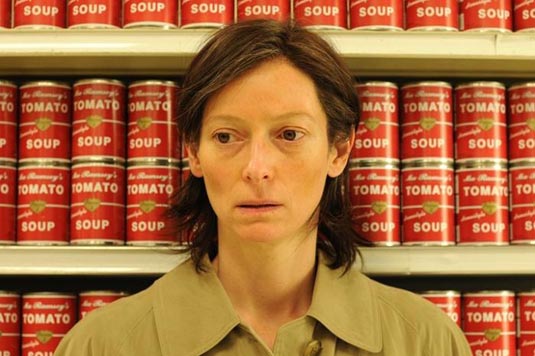Vaguely considering going to see Avatar in 3D at the Kingston IMAX this week - I have seen Avatar before, of course, including once at the BFI IMAX, but Avatar is the kind of film it's worth taking the opportunity to see on the big screen when it rolls around. The below is an article I wrote in January of 2010, just after Avatar's original release.
The narrative is unoriginal and predictable, the characters are one dimensional, and the complex combining of the various themes just doesn’t quite square. Even so, Avatar, the film we were told was going to revolutionise cinema, is undoubtedly a visual feast. Sitting in the cinema I had a viewing experience which was entirely new to me; I found my eyes sliding from level to level, looking through the screen in a way I never had before. But has Cameron really managed to pull off what so many others couldn’t? Has he produced what everybody seems to be on the lookout for these days, the single perfect revolutionary film which will change the face of cinema forever? Has Avatar heralded the day that we take the old regime, throw it against a wall and shoot it with, in Cameron’s case, a three foot long poison tipped arrow? Is this really what Cameron was trying to do, anyway? Can we say that he’s failed, if he wasn’t even making an attempt? And of course, the biggest question of all the questions that are thrown up by this film, does it even matter?
It didn’t quite achieve what many conjecture to be the ultimate aim of cinema; that is, virtual reality style immersion. It never made me forget that I was in a theatre, but it did at times make me forget that what I was looking at wasn’t technically ‘real’. It always surprised me when I periodically remembered that these were not big blue people I was watching run through a forest and scrunch their toes in the soil. These were, essentially, animated characters, albeit animated characters being played by humans. There are no blue people; there is also no forest, and more than likely no soil. If The Matrix films showed us the desert of the real, then Avatar has shown us the revolution of it. Let’s face it, watching Jake Sully and Neytiri do something as simple as walk through a forest beats even ‘The Burly Brawl’ (in which Keanu Reeves fights off hundreds of Hugo Weavings with nothing more than his wits and a big metal pole) all to shit. Digital effects have become famous for their contrariness; without wishing to denigrate The Matrix too much, digitally duplicating an actor over and over again becomes a relatively simple procedure when compared to getting a character’s pupils to contract correctly, or their hair to blow convincingly in the wind. When it comes to digital effects, the devil is in the details. The 3D isn’t even a factor when simply considering the ‘reality’ of the effects, and is probably no less a gimmick now than the last umpteen times the attempt was made to introduce it into mainstream cinema. Avatar looks pretty stunning with or without 3D, but without it there is much less of the afore-mentioned ‘sliding’ of the vision through different layers of celluloid. Look carefully through, not at, but through, any given scene on the planet Pandora, and you will be able to count anywhere from three to six or seven different ‘levels’ for your eyes to latch onto. 3D, like Cameron’s new ‘e-motion capture’, is itself simply another layer of the attempt to make Avatar realer than real, until the indentations in Jake Sully’s skin become more authentic to your eyes than the ones on your hand three inches in front of your face.

However, there is a confusing contradiction inherent in films such as Avatar; while you are watching something that seems infinitely more ‘real’ to your eyes and brain than say, a gritty eighties drama, you are at the same time watching an incredibly artful and calculated artificial world. As we progress toward the future of film, it seems that we as viewers need more and more technical tricks to fool us into accepting that what we are seeing is ‘real’. This is no easy task, especially considering the media saturated age in which we live. To make us forget the cameras and the crew, and to train our brains into accepting that nothing is ‘real’ beyond the edges of the screen can be a laborious and thankless task. One wonders whether that is how Cameron now views his latest creation. Tearing down the giants of cinema with a single sentence is a popular practice; Avatar was slated from the second it was released, and deservedly so. It’s too long, it’s predictable, the acting isn’t exactly stellar, and it’s self indulgent in the extreme; it has even been labelled racist by some, and given a new name by the internet gossips, the inspired ‘Avatard’. The general consensus has been “sure Jim, it looks pretty, but how about hiring some decent writers?”
While I agree completely with this view, I believe I would have to relinquish my status as a film geek if I wasn’t more than willing to let Cameron off the hook. In the same way that the idea of cinema was invented long before it could be actualised, and early filmmakers were forced to wait for the technology to catch up with the concept before they could really begin committing their ideas to the screen, Cameron formulated Avatar years before the technology was anything like as advanced as he needed. While the product of his gargantuan effort may not be perfect, you have to look at it for what it is; Cameron was essentially making it up as he went along. The art of film and filmmaking, which, especially within the Hollywood system, can be an incredibly ingrained and systematic process, is advanced only by those who are brave enough to risk utter ruin by pioneering new technologies, new techniques, and new ways of seeing. Often whether these new techniques ‘work’ or not is irrelevant. Film, like any other art, is constantly developing, changing, and attempting to convey something new, and in a world where most people consider film as nothing more than a Friday night’s distraction, let alone an artistic pursuit, it can be very easy to forget that.
Let’s sit back for a moment and look at what Cameron has actually achieved here. Whether he was really trying to revolutionise cinema is a question that only he can answer, and we have already agreed that even if he was trying he hasn’t succeeded – but what he has done is make a pretty damn spectacular action movie, with its own unique visual aesthetic, that whatever critics might say looks like nothing any of us has ever seen before. Has Cameron changed the face of cinema forever? The answer, in my opinion, is no. Sure, people will follow in his footsteps, the technology will develop even further, and I’m sure that a lot sooner than you think you’ll be able to sit in a cinema, turn your head around 180 degrees, and still see trees behind you. But the cinema is not a perfectible art; as Andre Bazin wrote even in the early 20th century, there is no ‘total’ cinema, no ultimate goal that filmmakers are working towards, even if they think that’s what they’re doing. Any filmmaker trying to make ‘perfect’ cinema will get to what they think is the top of the mountain and find a whole new cliff face waiting for them. If Avatar has failed at an impossible task, then it really hasn’t failed at all. My advice to those who would, based on its faults, dismiss Avatar completely, is this; come back and talk to me again when you’ve had a try – then maybe you’ll cut Cameron some slack.
As to whether Avatar, or any of the issues related to it, really matters as far as contemporary and future cinema is concerned – this is a matter of personal opinion. But for those of us who live and breathe for the big screen, the occasional appearance of films like Avatar is why we get up in the morning.




